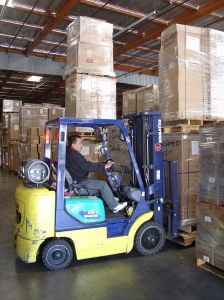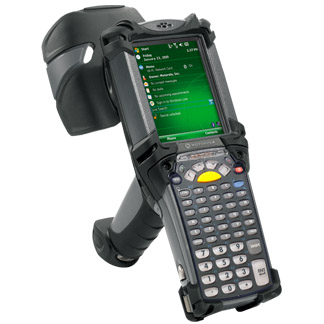RFID Readers: What You Need to Know
 You'll find them in parking garages, warehouses, labs, schools, retail stores, and hospitals. They lurk by tollbooths, wait at marathon finish lines, and sit near the front of school buses. They monitor the movements of livestock on ranches and people in office buildings. Even NASA, the agency that's taken the United States to the moon and back, uses RFID readers to inventory "critical data center assets like servers, switches, and racks."
You'll find them in parking garages, warehouses, labs, schools, retail stores, and hospitals. They lurk by tollbooths, wait at marathon finish lines, and sit near the front of school buses. They monitor the movements of livestock on ranches and people in office buildings. Even NASA, the agency that's taken the United States to the moon and back, uses RFID readers to inventory "critical data center assets like servers, switches, and racks."
RFID readers can be fixed, mobile, wireless, or handheld. They can be suspended from above, attached to a conveyor belt, or fixed to a forklift. An employee might carry one to make sense of the stockroom. And they are changing the way industries keep track of their stuff.
The general category of RFID readers includes RFID interrogators, RFID scanners, and the so-called RFID reader-writer. The last item in the list indicates that the name "RFID reader" can be somewhat of a misnomer since the devices often encode or write data to an RFID tag. They are also described as sensors because they "sense" all of the RFID tags within their specific range.
These readers add the element of speed and the singular ability to scan multiple items simultaneously rather than one by one. It's not uncommon for an RFID reader used in supply chain operations to complete up to 1,500 read operations per second.
Types of RFID Readers
RFID readers, like tags, can be passive or active.
Passive RFID readers provide power to RFID tags lacking their own energy source. The tag uses backscatter technology to return information to the reader. Conversely, active RFID readers take transmitted energy from active RFID tags, which contain their own power source.
Running the gamut from ultra high frequency (UHF) to high frequency to low frequency, passive RFID readers have shorter read ranges than active readers.
UHF readers fit industry applications requiring read ranges up to 30 feet using lower cost RFID tags. For example, retailers like Wal Mart require the use of passive UHF RFID readers within their supply chain.
When tag read distances are about three feet or so, passive high frequency (HF) readers are recommended. Typically these readers have successfully interrogated tags on metal objects and goods with high water content.
Passive low frequency (LF) readers have a range of just a foot or less, can successfully penetrate non-metallic surfaces, and ideally scan items with high water content like fruits and vegetables.
In searching for an RFID reader that can extend the range to 100 feet or more, you'll be limited to active devices. Generally the higher powered RFID tags will allow greater read ranges.
Industry insiders predict that RFID readers - as with many electronic components - will become smaller and more application-specific as the technology continues to refine. And the sensitivity, or the ability to recognize faint signals from tags farther away or embedded in a denser material will continue to improve. RFID readers will also support many more features, including encryption.
That said, here's a little more about how RFID readers are used.
Fixed RFID Readers
Just like the name says, these readers are fixed in place and interrogate tags that pass through so-called "choke" points. Mounted on loading dock doors, entryways and exits, they identify all the traffic that passes within the specified range.
A fixed reader from Motorola is the FX9500. Designed to be deployed in tough, industrial environments, this RFID reader is well-suited for high volume, high density applications with lots of tags going past.
Mobile RFID Readers
Here's an example of a reader by Intermec, designed to be mounted on a vehicle such as a forklift. Built to operate reliably in a rugged industrial environment, the IV7 Vehicle Mount RFID Reader easily scans pallets picked up by the forklift. It captures the location of pallet pick-up, the path traveled by the forklift, which doors were passed through, and the final destination.
Handheld RFID Readers
Mobile readers or handhelds are used when the scanner must be brought to the tags rather than the other way around. Retail stores use handheld readers to inventory items out on the sales floor. Another common use is exception-based scanning, when you might be looking for just a few specific items within a larger group.
Motorola offers a handheld reader, the MC9090-G, which uses both visual and audible cues to guide workers to a specific item. A beep tone increases in frequency and volume as the device moves closer to the wanted item, and at the same time a sliding graphical bar increases in size.
The wide variety of RFID readers available on the market today means that there are plenty of solid choices to pair with every RFID tag. It's just a matter of identifying what you want to count and where and when you want to count it.
See related articles:
RFID Tags and RFID Readers For Improved Hotel Inventory
RFID Chips Get Smaller and More Versatile
{jcomments on}
